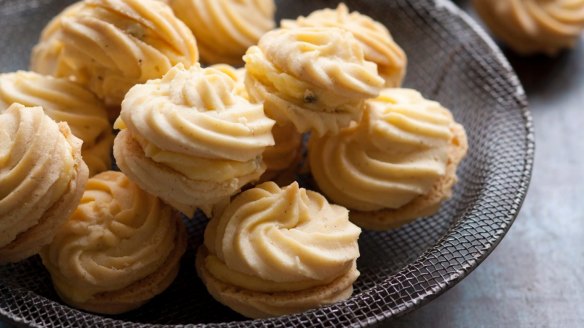Why do stale biscuits go soft but cakes become hard? And what's in a pasty?

A colleague informed a group of us on a tea break in the staffroom that the defining difference between a cake and a biscuit is that a cake will harden and dry out when it goes stale, whereas a biscuit will go soggy when it is stale. Why this is so? H. Matthews
Was there a whiteboard involved and a performance assessment afterwards? Sorry, I just have this dystopic vision of a fluoro-lit workplace with staffroom. You can see why I work from home. The word "biscuit" is from the Latin, via French, bis (twice) and coctus (cooked). Think Italian biscotti, a sweetened bread that has been cooked twice. The original biscuit would have been baked in a hot oven then dried in a slow oven.
"Cake" comes to us via English's Germanic roots: think kuchen in German, kage in Danish and kaka in Swedish. Originally made from dough, cakes became sweeter as sugar became cheaper. Now, biscuits are quite dry but white sugar is hydrophilic, meaning it loves water.
Over time, sweet biscuits will absorb water and become soft, unless they are made with invert sugar (a mixture of glucose and fructose), either chemically treated sugar or a natural product such as honey or golden syrup.
Cakes, however are made of a moist matrix of starch, sugar, fat and liquid. When you make the batter, the starch particles in the flour absorb water from the liquid, swell, turn into a gel and harden as the cake is baked. Over the next few days, however, the starch loses water again and begins to crystallise once more, hardening the cake.
If a cake has a lot of sugar this effect will be tempered by the water absorbed by the sugar. If a cake does not harden at all and was bought in a plastic wrapper, you will probably find it packed with hideous amounts of chemicals. It should only be used for jacking up old caravans.
Letters and feedback
In regards to Cornish pasties, many readers, such as J. Mooney, wrote in describing a traditional pasty recipe that has meat and vegetables in one end and fruit in the other. While the official European Protected Geographical Indication (PGI) states that only beef, swede, potato, onion and seasoning can be used in a Cornish pasty, there are many variations, including seafood pasties historically made along the English coast. One meat and fruit pasty-like dish from England is the Bedfordshire "clanger" that sees beef and vegetables in one end of the suet pastry envelope and fruit and/or jam in the other. The clanger was steamed and often baked to make a robust meal for field or factory workers.
Send your vexing culinary conundrums to brainfood@richardcornish.com.au or tweet to @Foodcornish
